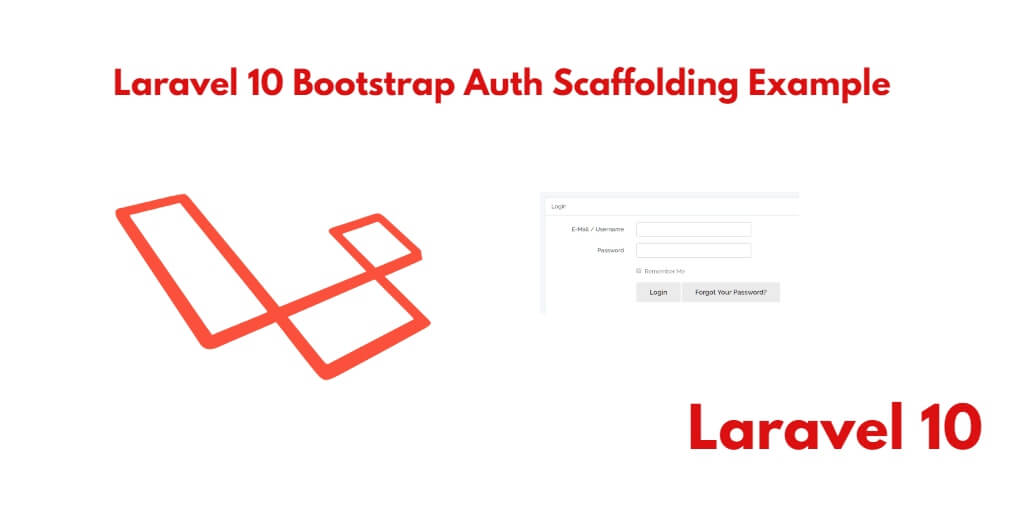Laravel Bootstrap Auth UI provides login, register, logout, password reset, forgot password, email verification, two-factor authentication, and session management functionality inbuilt. For this you just need to install Laravel’s bootstrap auth ui package in your Laravel web app. In this you will not need to do any customization. or as you wish.
In this laravel bootstrap auth tutorial, you’ll learn how to create login, register, logout, forget password, profile, and reset password page by using Laravel bootstrap auth ui scaffolding.
Laravel 10 Bootstrap Auth Scaffolding Tutorial Example
Steps to install and use bootstrap auth scaffolding in laravel 10 apps:
- Step 1 – Installing Laravel 10 New Setup
- Step 2 – Configure Database to Laravel App
- Step 3 – Installing Bootstrap Auth Scaffolding and UI
- Step 4 – Install Npm Packages
- Step 5 – Run PHP artisan Migrate
- Step 6 – Run Development Server
Step 1 – Installing Laravel 10 New Setup
First of all, Open your terminal or command prompt.
Then execute the following command into it to download or install Laravel 10 new setup in your server:
//for windows user cd xampp/htdocs //for ubuntu user cd var/www/html composer create-project --prefer-dist laravel/laravel Laravel8Auth
Step 2 – Configure Database to Laravel App
Once you have installed Laravel web app on your server. Then you need to configure it with your Laravel app.
So, visit your app root directory and find .env file. Then configure database details as follows:
DB_CONNECTION=mysql DB_HOST=127.0.0.1 DB_PORT=3306 DB_DATABASE=db name DB_USERNAME=db user name DB_PASSWORD=db password
Step 3 – Installing Bootstrap Auth Scaffolding and UI
Once you have configured the database with the app. Now, you need to install auth scaffolding bootstrap and UI package in the Laravel app.
So open terminal or cmd and execute the following commands into it:
php artisan ui bootstrap OR php artisan ui bootstrap --auth
Step 4 – Install Npm Packages
Once you have installed bootstrap auth ui. Then you need to install node js. So, you can execute the following command for that:
npm install
Then type the following command on cmd to run npm:
npm run dev
Step 5 – Run php artisan Migrate
In this step, Execute the following command on the terminal or cmd to create a database table:
php artisan migrate
Step 6 – Run Development Server
Finally, execute the following command on terminal or cmd to start the development server:
php artisan serve
Now, open the browser and hit the following url on it:
http://127.0.0.1:8000/
